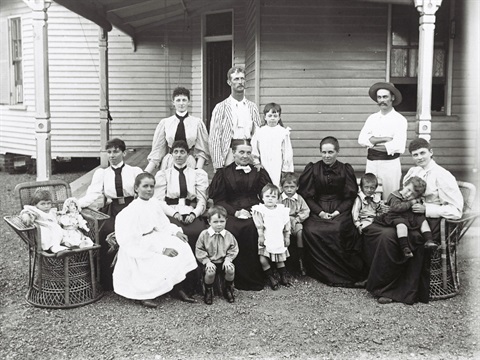Genealogy at home: Births, Deaths and Marriages (Part II)
Published on 24 March 2020

Australian Birth Death and Marriage indexes
In Australia, birth death and marriage registration is under state government jurisdiction, so each state will have it’s own separate index, separate release dates for information and separate costs for certificate purchase. Details of the separate BDM indexes, web addresses and costs can be found via Coraweb.
Information (by State)
New South Wales
Victoria
Queensland
South Australia
Tasmania
Western Australia
Northern Territory
Australian Capital Territory
Australian BDM indexes are also available on Ancestry and Findmypast databases.
This collection covers:
- Australia Birth Index, 1788-1922 - New South Wales (1788-1910), Northern Territory (1870-1910), Queensland (1829-1910, 1915-1919), South Australia (1842-1922), Tasmania (1803-1910), Victoria (1836-1910) and Western Australia (1841-1905)
- Australia Death Index 1787-1985 - New South Wales (1788-1945), Northern Territory (1870-1913), Queensland (1829-1959), South Australia (1842-1970), Tasmania (1803-1919), Victoria (1836-1985) and Western Australia (1841-1980).
- Australia Marriage Index 1788-1950 - New South Wales (1788-1945), Northern Territory (1870-1913), Queensland (1829-1935), South Australia (1842-1937), Tasmania (1803-1919), Victoria (1836-1920) and Western Australia (1841-1950)
Church records on microfilm
Church records can be identified in the NSW BDM indexes by the difference in the registration number. A church record number will look something like this V18491487 34A/1849
If you find an index number which looks like this, the parish registers have been microfilmed and are available at SPE, so any record with this type of number does not need to be obtained from BDM, saving you the cost of a certificate.
Remember, these records are available in NSW for anything pre 1856.
Anglican Parish Registers for Hunter Valley on microfilm
Another set of microfilm are the Anglican Church Parish Registers for Newcastle and the Hunter region. The advantage of looking at these films is that if people stayed in an area for an extended period of time, many family events may well be recorded in the same register.
Areas covered are: Roll 1: Christ Church, Newcastle. — Roll 2: Belmont and Swansea, Branxton and Lochinvar, Denman, Dungog, Gosford, Gresford. — Roll 3: Gundy, Hamilton, Hexham, Lochinvar, Lambton, Jerry’s Plains, Maitlan West. — Roll 4: Maitland West, Maitland South, Maitland East. — Roll 5: Merriwa and Cassilis, Merewether, Morpeth, Mount Vincent, Muswellbrook. — Roll 6: Newcastle-Cooks Hill, Paterson, Raymond Terrace. — Roll 7: St. Albans, Singleton, Stockton, Stroud. — Roll 8: Taree, Waratah, Wallsend, Wingham, Wollombi.
Certificates and Transcription Agents
Birth death and marriage indexes are just that. They give basic details of events – just enough to let you verify you have the correct person. You are then expected to purchase the full certificate to get the extra detail required for family history.
When purchasing a certificate from a registry, you receive an official document which can be used for legal purposes. If you are doing family history, you really don’t require an official certificate.
In NSW, The Registry has accredited Transcription Agents who are able to provide genealogists with full transcriptions, partial transcriptions or verification of certain fields of a birth, death or marriage record. They charge roughly half the cost of an official certificate. You can visit the NSW Government website for more information.